My son (25 years old) constantly has internal acne on his nose (tip of the nose, wings). Redness, inflammation, purulent head. When it ripens, it squeezes it out and treats it with iodine (I told you not to do this). But soon the pimple appears in another place, and this lasts for a very long time (maybe two years). I went to the doctor, didn’t see any results, and doesn’t want to go anymore. They recommended a diet, adjusting the intestinal microflora, and took antibiotics. Maybe you need to take a blood test for viruses? Which doctor is best to see?
Doctor's answer
Dermatovenerologist and dermatocosmetologist Daria Tyshchenko answers
Hello!
You are right, in order to know how to treat internal acne on the nose, you need to understand the causes of the disease. There can be many reasons for the appearance of such rashes on the nose (tip, wings), among them acne comes first.
Acne – chronic illness, characterized by the appearance of acne on the skin. This disease is based on hereditary endocrine disorders (increased hormone levels) and a hereditary type of secretion sebaceous glands(increased sebum secretion).
There are four main causes of acne:
- Increased sebum production (increased sebum secretion in the facial area).
- Excess follicular hyperkeratosis (thickening of the upper layer of skin, popularly known as “goose bumps”).
- Reproduction of the bacterium Propionibacterium acnes (P. acnes).
- Inflammation.
Taking into account clinical picture acne has many clinical forms. Acne is localized on the skin of the face, upper extremities, upper chest and back and manifests itself as papules (blackheads), pustules (blackheads with a purulent core) and nodes, as well as open and closed comedones (“blackheads”). This may match your description of the problem. After acne resolves, atrophic, less often hypertrophic, scars often remain.
Therefore, in case of such rashes, you need to consult a dermatologist again (better to another doctor, since you do not see results). Squeezing pimples not only creates cosmetic defects(scars), but can also be a direct cause of the spread of infection through the blood vessels of the skin (inflammation that occurs in different parts face when squeezing out blackheads).
Treatment-resistant forms of acne may indicate the presence of endocrine disorders (increased hormone levels), therefore, according to indications, a consultation with an endocrinologist and appropriate tests are prescribed.
Acne treatment should be comprehensive and permanent:
- Antibacterial drugs (external treatment and oral administration).
- Topical (local) retinoids (external treatment).
- Systemic retinoids (severe forms of acne) are prescribed orally strictly under the supervision of a specialist.
- Maintenance treatment (use medicines constantly, every day, morning and evening, including facial care products).
The second most common cause of internal acne is rosacea. Rosacea is a chronic disease characterized by the appearance of redness and acne on the skin, which also corresponds to the problem you described.
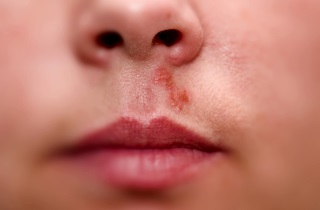
The duration of treatment for rosacea depends on the severity of the case.
Rosacea is localized mainly on the face and is caused by various reasons:
- Vascular disorders.
- Microorganisms (Demodex mite, bacteria of the Helicobacter pylori genus, found in the stomach during gastrointestinal diseases).
- Dysfunction of the digestive tract (gastritis, gastroduodenitis).
- Immune disorders (primarily decreased immunity).
- Changes in the pilosebaceous apparatus (increased sebum secretion in the area of the wings of the nose).
- Climatic factors (climate change, temperature changes).
- Psychovegetative disorders (vegotovascular dystonia and others).
IN last years More and more attention is being paid to Demodex mites, which stimulate inflammation in patients with rosacea. Treatment will depend on the form of the disease, which a dermatologist can determine during consultation. However, the basis for the success of rosacea treatment lies in the joint efforts of the doctor and the patient to identify provoking factors, which are strictly individual.
In the diagnosis of this disease, the most important analysis is a microscopic examination of the inflamed elements for mites of the genus Demodex (scraping), which must be taken general analysis blood and a general urine test, which will be prescribed to you by a dermatologist.
In diagnosing rosacea, it is certainly necessary to consult a gastroenterologist for examination of the gastrointestinal tract (gastritis, gastroduodenitis, detection of the bacterium Helycobcter pylori, which is one of the causes of rosacea), a referral to which you can also receive after an appointment with a dermatologist.
Therefore, I recommend that you convince your son as much as possible to conduct a full comprehensive examination by a dermatologist to identify the causes of rashes on the nose. Most severe purulent forms of inflammation and accompanying complications are the result of long-term self-medication.
Nose - unique system, performing important functions in the body. First of all, it filters and warms the air we breathe. With the help of secretions secreted by the mucous membranes and hairs growing in the nasal passages, small dust particles are retained in the “vestibule” of the respiratory system and do not penetrate the bronchi and lungs. However, this only happens when we are healthy; if the immune system fails, a cold or purulent pimple may appear in the nose.
Causes of rashes
A pimple on the nose can pop up various reasons. First of all, this is a signal that the body’s protective functions have failed and an infection has entered it. It may be viral or bacterial in nature. Treatment is prescribed to each patient individually, since it is necessary to act not only on the rash, but also on the disease that led to it.
Let us consider in more detail what can provoke such a violation.
- Herpes virus. Herpetic infection “likes” to be located on the mucous membranes, most often it affects the lips and genitals. However watery pimple it can jump up in the nose too. It makes itself felt even before it appears - the skin hurts, itches, itches, and a small bump immediately appears, which then fills with liquid. If the infection is primary, then these symptoms may be accompanied by elevated temperature body, aches, general malaise.
- Bacterial infection. Bacteria pass through our mucous membranes every day, but they negative impact blocks phlegm. If there are microcracks, damage and other disorders inside the nose, then pathogenic microorganisms have a chance to reproduce. At first, the pimple may not hurt at all, it has a red or white “cap,” but as the infection develops, complications may appear. Causes of infection:

- Staphylococci and streptococci. These infections are the most dangerous, as they lead to pimples, which eventually turn into boils. They are located in the hair follicles, at the very “entrance” to the nose. The boil begins to hurt and sharply increases in size. Its danger lies in the fact that pus accumulates inside the capsule; if it breaks through, it can get not only outside, but also into the bloodstream. The vessels passing through the nose go to the brain, so infection can affect it soft fabrics. If you find a large abscess, you should immediately consult a doctor.
Features of therapy
If you have a pimple on your nose, only an otolaryngologist can decide how to treat it. The doctor chooses how to influence the tumor most effectively. First of all, it is necessary to determine the etiology of the rash in order to choose the most appropriate therapy.
Let's consider what to do with a violation in different situations:

- linden flowers;
- chamomile flowers;
- coltsfoot-St. John's wort, etc.
- Treatment of a boil. Opening a large abscess on your own or picking at it with anything is strictly prohibited. If you discover such a problem, you should immediately go to the doctor. In the ENT office, he will open the abscess, wash the wound, and prescribe antibiotics for internal use.
Preventing rashes
 Only an otolaryngologist can make a decision about how to treat acne in the nose; use it yourself medications or folk remedies prohibited, it can only harm your health. It's much easier to prevent breakouts if you know you're prone to them. To do this, you should follow these simple rules:
Only an otolaryngologist can make a decision about how to treat acne in the nose; use it yourself medications or folk remedies prohibited, it can only harm your health. It's much easier to prevent breakouts if you know you're prone to them. To do this, you should follow these simple rules:
- harden the body, strengthen the immune system;
- maintain nasal hygiene in moderation, do not overdo it with the use of special cleaning products;
- fully treat chronic and acute diseases;
- do not overcool;
- Do not use nasal drops and sprays for more than the prescribed time.
It is also worth remembering that no pimples in the nose should be touched or tried to be squeezed out. If you have them, rest assured that mechanical impact will only worsen the situation.
Both viral and bacterial rashes tend to spread if you try to get rid of them. Remember that herpes is transmitted through personal belongings and contact with mucous membranes during an exacerbation. Avoid using other people's towels and kissing sick people.
conclusions
If a pimple appears on your nose, this is a reason to visit an otolaryngologist. Only a doctor can reveal the real reason violation and decide how to eliminate it.
In some cases, the use of conservative measures will be sufficient, but if the patient has a painful large boil, then hospitalization and opening of the abscess may be necessary. These rashes require a particularly careful approach to treatment, as they can cause serious complications.
The otolaryngologist prescribes to patients medications that act to eliminate the pimple itself and the disease that caused it. Preventive measures in almost 100% of cases they help to avoid the recurrence of the disorder; they should not be ignored under any circumstances. In order not to harm yourself, seek qualified help even if small pimples appear in your nose, this will help maintain your health.
The appearance of an internal pimple in the nose causes considerable discomfort and spoils appearance. However, you should not get rid of the defect by squeezing out the boil. Blood vessels located in the organ area can quickly deliver infection to the brain tissue. Therefore, it is necessary to treat boils medications, preferably under the supervision of a doctor.
How to treat a purulent pimple in the nose?
All procedures are carried out depending on the stage of development of the boil. For example, in the infiltration stage the following treatment is indicated: It is recommended to wipe the skin at the site of inflammation disinfectant solutions. You can use salicylic alcohol 2% or 7% ethyl alcohol.
If the source of inflammation is in the nasal cavity and is invisible to others, try wiping it with 5% iodine.
Since acne is often caused by bacteria, a topical one will be helpful. Preparations containing fueidic acid and mupirocin are used. If this is not an isolated case, the doctor may prescribe a course of internal antibiotics.
If a purulent head appears, you should consult a surgeon, since it is best to treat a quickly ripened pimple in the nose with a simple operation.
How is an internal pimple in the nose treated surgically?
The simplest procedure for opening a boil is carried out stationary, using. If the pimple is located deep enough, intravenous general anesthesia is used:
If the appearance of a boil does not threaten complications, treatment will be effective with the help of physical procedures. Currently, lasers are widely used to cleanse the blood of infection. Besides, good method How to get rid of an internal pimple on the nose, autohemotherapy is recognized - the injection of the patient’s own venous blood subcutaneously or intramuscularly.

Popular rumor says that if a red knot appears on your nose, then someone is secretly in love with you. You can take this sign with humor. But what if a pimple appears in the nose and it is internal, how to treat the inflammation? The products used should be gentle, because the thin mucous membrane of the nasal cavity contains many nerve endings and capillaries.
Inflammation in the nasal passages is caused by the same reasons as in other parts of the upper respiratory tract. The main negative factor is infection that has entered from the outside. or on the nose most often appears due to inflammation sebaceous gland as a result of increased growth of bacteria that constantly live in the pores of the skin.
Attention! The reasons for the appearance of small bubbles with clear or cloudy contents in the nose, on the red border of the lips and in the oral cavity are viruses.
The inside of the nose can pop out with herpes simplex, chicken pox, ARVI. Pimples in the nasal passages and on the wings of the nose are not the main symptom of chickenpox and colds. More characteristic features- sudden increase in temperature, runny nose, cough, red eyes.
Signs of activation of herpetic infection in the epithelium of the nasal cavity:
- A burning and tingling sensation is felt at the site of the virus introduction.
- Worries about itching, redness, severe pain in the nose (for 3-4 days).
- First one pimple appears, then a group of transparent yellowish blisters.
- The bubbles merge, burst, and the contents flow out.
- Sores and crusts appear.
- The rash is healing.
Herpes simplex is a highly contagious infection and the virus can easily be transmitted to other people. Painful changes occur in the nasal mucosa and in the skin next to the nose. Infection occurs from a sick person or carrier through direct contact, through hygiene items, sneezing, coughing and kissing.
Herpetic pimple in the nose on the mucous membrane - how to treat:
- Lubricate the vesicle and adjacent areas of the epithelium daily with Zovirax antiviral ointment (Acyclovir, Famciclovir and Panavir).
- Do not squeeze pimples in the nose, on the wings of the nose, on the lips and in the nasolabial triangle.
- For severe itching, pain, fever, take Cetirizine tablets or Zyrtec drops, Ibuprofen tablets.
- After the bubbles burst and crusts appear, apply sea buckthorn oil to accelerate the healing of the mucous membrane and skin.
Treatment with folk remedies is less effective in the fight against herpetic acne. Propolis solution, celandine oil and calendula have an antiviral effect. It is necessary to lubricate the bubbles in the nose with a cotton swab moistened with one of the preparations.
Before using any new product to get rid of acne, it is recommended to try it on the skin behind the ear. During illness, you need to support your immune system - take vitamins, drink tea with echinacea, ginger, chamomile.
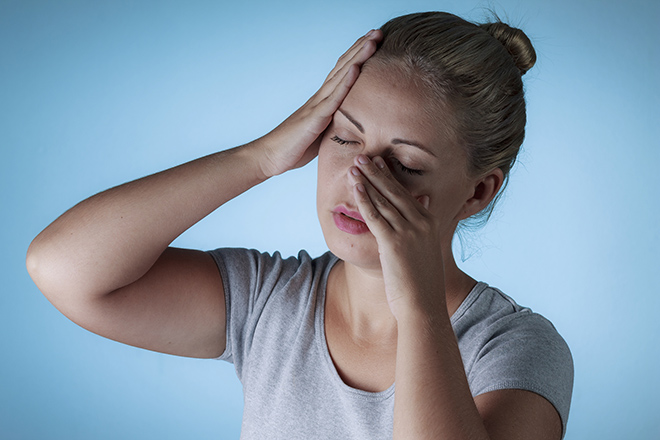
If a pimple pops up, then signs of bacterial infection can be recognized by severe pain and swelling of the skin area. A compaction appears, it increases, and along with the increase in the inflammatory process, discomfort intensifies.
The pimple hurts less when a yellowish-white head “ripens” in the center of the red bump. Inside there is a capsule with pus.
Attention! When a large pimple in the nose matures, external breathing becomes difficult, headaches begin, and the general health, body temperature rises.
The reasons why they occur are infection of hair follicles by bacteria. Typically, boils form in the vestibule of the nasal cavity, inside on the mucous membrane of the wings of the nose.
Treatment of inflammation must begin from the moment the first symptoms appear - redness, swelling, a feeling of fullness and pain.
The formation of an abscess in the nasal cavity is dangerous because its contents - microbes and toxins - can enter the lower parts of the respiratory system. Sometimes pus penetrates the systemic bloodstream and the brain. You should not squeeze a boil in your nose or try to open it in any other way.
Local treatment purulent pimple inside the nose:
- Do inhalations with decoctions of oak bark, infusion of chamomile or sage (in the evening).
- Treat the affected area with a liquid antiseptic, for example, Miramistin, using cotton swab(several times a day).
- Apply Levomekol antibacterial ointment on a gauze pad in the morning and evening.
- Lubricate the nasal cavity with the juice of aloe leaves.
Antiseptics and antibacterial drugs act on the causes of inflammation - bacteria. What to do if you don’t have these funds at hand? You can use calendula tincture and chloramphenicol alcohol diluted with boiled water.
Instead of Levomekol, you can use Syntomycin emulsion or Levosin ointment. Ichthyol ointment has pungent odor, strong action, it is undesirable to use it to treat the nasal mucosa.
A pimple that has popped up will hurt less if you take tablets or syrup with non-steroidal anti-inflammatory substances - Ibuprofen, Paracetamol. To reduce discomfort, relieve swelling and nasal congestion, you can take it orally antihistamines(Claritin, Zodac, Loratadine).
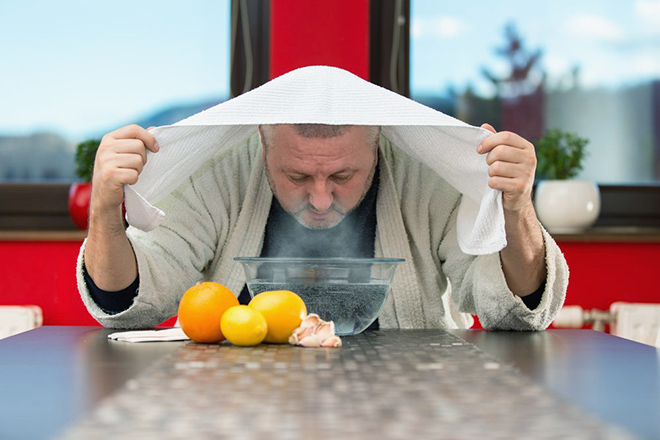
Acceleration of mucosal healing
Timely treatment begins to act on the causes of inflammation and significantly reduces its intensity. Less pus is formed, healing occurs easier. After the acne, and then the abscess, has matured and opened, it is necessary to stop using so-called “pulling” agents, for example syntomycin emulsion. Regular treatment of the wound with antiseptic solutions should be continued.
When all the purulent contents are released, epithelization begins at the site of the pimple. Many remedies help speed up healing: rosehip and sea buckthorn oils, ointments and creams with dexpanthenol - Bepanten, Depanthenol. Treatment with Solcoseryl ointment ensures resorption of the scar and restoration of the functions of epithelial tissue.
Attention! It is useful to rinse the nasal passages with a solution sea salt, chamomile infusion. The mucous membrane should always be clean and moisturized!
All manipulations to treat a pimple on the nasal mucosa should be carried out only with clean hands. It is necessary to get rid of cotton swabs and gauze pads used for care and application of medications in order to prevent re-infection and protect surrounding people from infection.
You can speed up recovery by taking vitamins A, E, C orally, immunostimulating drugs, and adjusting your diet in favor of plant foods with antioxidants.
- Symptoms and causes of acne
- Treatment of acne in the nose
- Traditional ways to deal with nasal acne
- Preventing nasal acne
Very often many are subjected to colds, which lead to a runny nose and other nasal troubles. If a pimple pops up in your nose, only a doctor can advise how to treat it. This is a fairly common phenomenon and should be taken seriously so that this illness does not lead to a more severe illness. You should not squeeze it out, especially with dirty hands, so as not to introduce an infection into the body. Getting rid of internal acne is much more difficult than external acne.

Symptoms and causes of acne
If a pimple appears inside the nose, the person feels painful sensations that can last for several days. The pain may be accompanied by swelling around the pimple and itching. Do not heat it, and try not to damage it before visiting a doctor. The nasal passages prevent bacteria from entering our body, but if the integrity of the nasal mucosa is compromised or immunity has decreased, an infection caused by viruses or bacteria enters the nose.
It could be a herpes virus main reason the appearance of which may be a person's cold. Then the appearance of a pimple may be accompanied by an increase in body temperature and a runny nose. It is best to deal with such pimples comprehensively, so that the disease does not return after a few days.
Herpes is a contagious disease that can be transmitted through close contact with sick people and even through the use of the same towel. Its exacerbation can be caused by climate change, adherence to a strict diet, if frequent use is abused. sunbathing. Strengthening your immune system will help curb the appearance of herpes.
The cause of such discomfort in the nose may be bacteria that have entered due to non-compliance with basic rules of personal hygiene. It could be dirty hands or a handkerchief that hasn't been washed in a while. Cleaning your nose daily with soap and water will help keep bacteria out of your nose. But fanatical cleansing of the nasal cavity with all kinds of solutions will lead to the opposite effect. The mucous membrane will often dry out and possibly crack - in such an environment microbes settle more often.
Chronic diseases or allergic rhinitis can also cause the appearance of white pimples in the nose. Vasoconstrictor drops in the nose, if used for more than one week, can provoke this disease; you must strictly follow the instructions that come with such drops.
A harmless pimple in the nose can develop into a large boil, and there is a possibility of infection spreading to other parts of the body. Therefore, it is necessary to monitor the patient’s condition, and if the inflamed area becomes large and purulent, immediately seek help from an otolaryngologist. This is especially true when the disease is detected in a child - show him to the pediatrician as soon as possible.
Return to contents
Treatment of acne in the nose
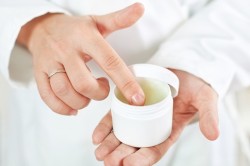 Treatment for pimples in the nose depends on the cause that caused their appearance. If the cause is a cold, then the treatment is comprehensive. To defeat the virus throughout the body, tablets or capsules with interferon will help. To dry out a pimple and quickly recover from it, you can lubricate it with ointment, for example, Acyclovir, Zovirax, Panavir and others. It will be useful to instill drops into the nose that contain interferon; this will help fight infection and increase the immunity of the nasopharynx.
Treatment for pimples in the nose depends on the cause that caused their appearance. If the cause is a cold, then the treatment is comprehensive. To defeat the virus throughout the body, tablets or capsules with interferon will help. To dry out a pimple and quickly recover from it, you can lubricate it with ointment, for example, Acyclovir, Zovirax, Panavir and others. It will be useful to instill drops into the nose that contain interferon; this will help fight infection and increase the immunity of the nasopharynx.
If there is an abscess in the nose small size, it can be covered with an ointment that contains antibiotics. In this case, tetracycline ointment, chloramphenicol ointment, Levomekol or Baneocin are suitable. They must be used strictly according to the instructions that come with them.
If a pimple in the nose is very painful and begins to increase in size, then it is possible that it is a boil, which occurs when streptococcus or staphylococcus enters the hair follicle nose Such an abscess can be very dangerous if it breaks inward rather than outward, in which case the pus can get into the blood vessels that are directed to the brain. This complication can lead to severe consequences for a person.
In this case, only a doctor can take correct solution. If necessary, he will open the boil and wash it with antiseptic solutions, which will prevent the pus from spreading throughout the body. This autopsy is performed under local anesthesia, and the patient will not feel pain, this is especially important when the patient is a child. After this procedure, you will need to come back for dressings for several days. In very severe cases, even hospitalization of the patient is possible; a course of antibiotics and physiotherapeutic procedures are also prescribed.
Return to contents
Traditional ways to deal with nasal acne
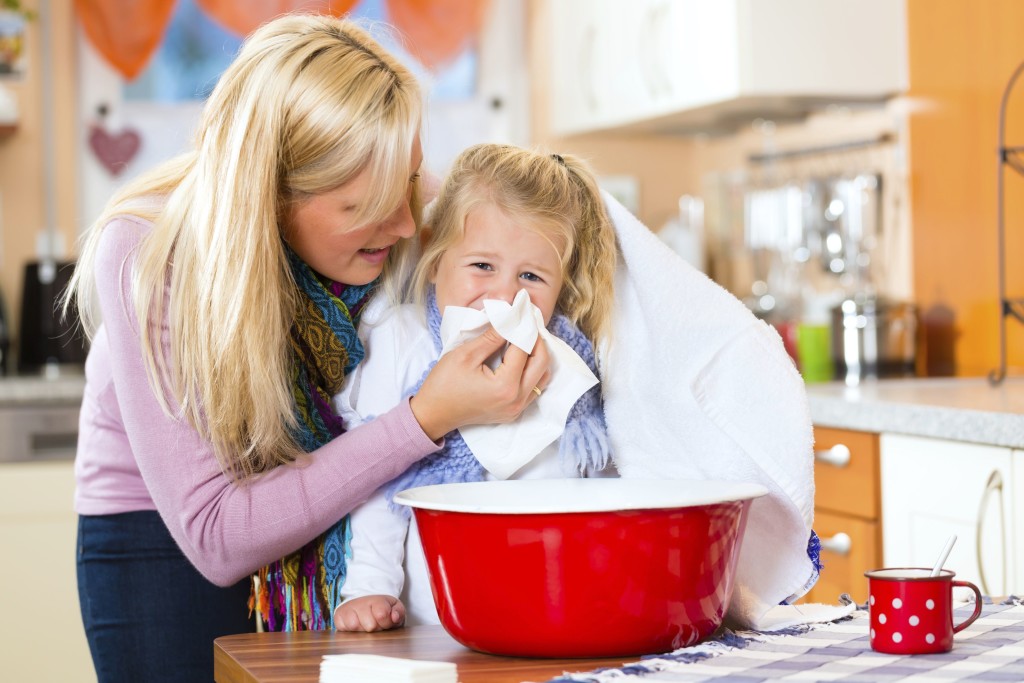 Folk remedies will help in the fight against acne that appears on the nose. You can use decoctions from medicinal herbs for inhalation or irrigation of the nasal cavity. You can take a mixture of sage and coltsfoot leaves, chamomile and linden flowers, dried yarrow and St. John's wort herbs. To prepare a decoction, take about 20 g of a mixture of herbs and pour a glass of boiling water. Do up to 6 procedures every day, which last approximately 5 minutes each.
Folk remedies will help in the fight against acne that appears on the nose. You can use decoctions from medicinal herbs for inhalation or irrigation of the nasal cavity. You can take a mixture of sage and coltsfoot leaves, chamomile and linden flowers, dried yarrow and St. John's wort herbs. To prepare a decoction, take about 20 g of a mixture of herbs and pour a glass of boiling water. Do up to 6 procedures every day, which last approximately 5 minutes each.
The sulfur found on the match is considered an effective remedy. The head of an ordinary match is moistened with water and lubricated with it on the inflamed area. You can treat an inflamed pimple in the nose by lubricating it several times a day with valocordin, camphor or fir alcohol, and applying the medicine using a cotton swab.
Herpes in the nose can be treated with sea buckthorn or bitter almond oil. You can grind a clove of garlic, add a little honey to it and lubricate pimples with this ointment. They use the inner film that forms on the shell of a hard-boiled egg and apply it to the pimple.
In order for the boil to ripen faster and the pus to come out of it, you can apply a towel soaked in hot water to your nose. It should be kept for 15 minutes up to three times a day. You can use a cotton swab to apply fresh juice from raw onion, garlic, aloe or celandine to the boil.
If the purulent boil is located shallow in the nose, you can try to remove it with aloe. A small piece of the plant is cut lengthwise and the pulp is placed on the inflamed area. This will help draw the pus out, after which aloe is used for speedy healing.
